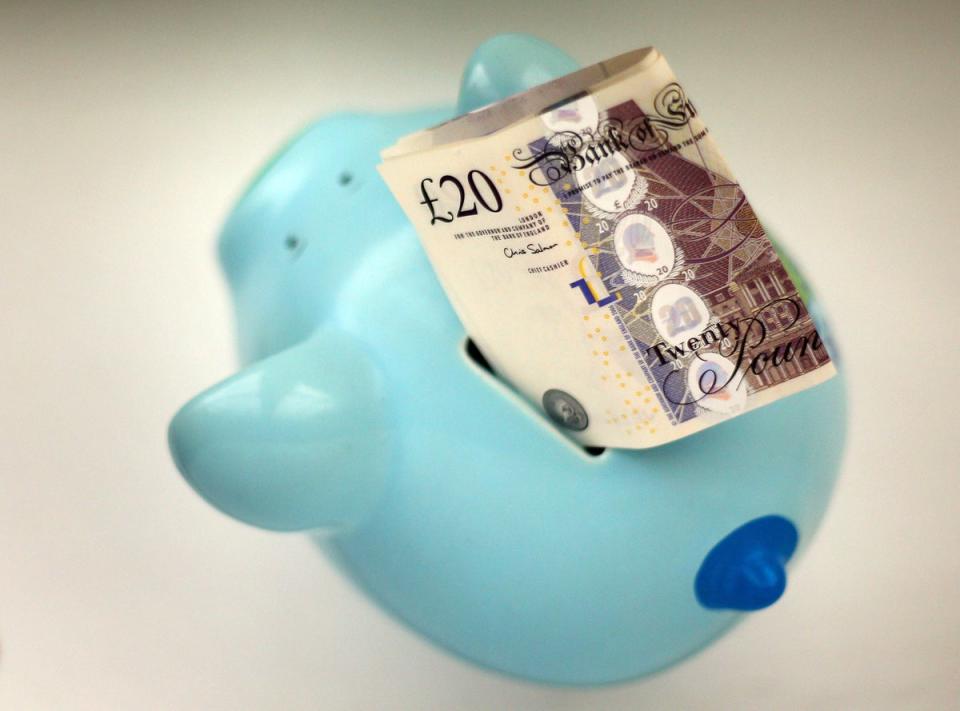Covid savers leave cash exposed as millions fail to recognise inflation threat

Thousands of Britons started saving more during the Covid-19 pandemic – but they could be missing out on substantial returns.
The average amounts being put away soared when coronavirus restrictions limited how we could spend money, according to the Office for National Statistics (ONS).
But financial advisers have warned that rising inflation will erode the value of these cash holdings unless they’re in accounts paying high interest, or held in investments.
Accidental savers
The ONS figures reveal that saving as a proportion of household resources hit a record 23.9 per cent between April and June 2020.
This ratio remained high during the pandemic, before falling back to 6.8 per cent in the fourth quarter of 2021, close to its pre-coronavirus level.
The increase is attributed to fewer opportunities to spend, putting money away for the future, and saving money for emergencies.
Boost to ISAs
Separate data from the Investment Association (IA) reveals that savers returned to the funds market in April by placing £683m into portfolios via Individual Savings Account wrappers.
Although inflows were half of those in 2021, they were still the third strongest in the last five years, according to Miranda Seath, the IA’s head of market insight.
“This is significant, as April’s positive sales come after one of the most challenging first quarters for retail fund flows on record,” she says.
Rising cost of living
According to Myron Jobson, senior personal finance analyst at interactive investor, the pandemic resulted in a “seismic shift in savings behaviour” that wasn’t sustainable.
“The escalating cost of living crisis means those fortunate enough to become accidental savers won’t be able to spend their bumper savings how they would have envisaged,” she says.
Holding on to the extra savings, she believes, will be a challenge.
“The need to build and maintain a cash buffer has become increasingly important amid the worst fall in living standards in a generation,” she adds.
Risks of cash savings
However, while it’s important to retain a cash buffer for emergencies, ideally in an easy-access account, there are potential risks to bear in mind.
The current rate of inflation is 7.8 per cent – and it’s being tipped by the Bank of England to hit 10 per cent later this year, before gradually coming back down to 2 per cent.
When you consider that many savings accounts pay very modest interest, it’s easy to see how the effective value of your savings can quickly be reduced.
Poor returns from banks
The high street banks make spectacularly disappointing life partners, according to Sarah Coles, senior personal finance analyst at Hargreaves Lansdown.
“If you give them your unwavering loyalty for decades, you might assume they’re giving something meaningful back in return, but when it comes to our savings, they have very little to offer,” she says.
Coles advises having a rainy day savings safety net that can provide three to six months’ worth of expenses in an easy-access account – and then making the rest of your cash work harder.
“If you’re prepared to tie your money up for a fixed period, you could make an even better return, because right now you can make as much as 2.4 per cent over a year or 2.8 per cent over two years,” she says.
Getting the best rates
According to Rachel Springall, finance specialist at Moneyfacts, keeping a close eye on the market and acting quickly is the best way to secure a top interest rate.
“If savers have an existing variable-rate account which hasn’t risen in line with the base rate, then switching to an alternative by ditching any loyalty is a wise move to get a better return,” she says.
She believes savers must always be prepared to shop around to find better rates.
“Challenger banks and building societies are currently offering some of the best returns, so even if a saver is not familiar with a brand, they are worth looking into,” she adds.
Benefits of investing
Of course, an alternative to cash savings is looking to invest in the stock market through either individual stocks or investment funds.
UK equities have returned just under 12 per cent a year from the start of 1952 to 30 May 2022, according to Duncan Lamont, head of strategic research at Schroders.
“That’s a lot more than the 6 per cent a year investors have earned on cash over the same period,” he says.
However, it hasn’t been a smooth ride over the past 70 years.
“UK equities have fallen in value in 18 of those years, and underperformed cash in 26 of them,” he adds. “There have been some spectacular falls and bounces en route.”
Popular investments
IA Global Equity Income was the best-selling fund sector during April, but this wasn’t just driven by investors searching for alternative income sources, according to the IA’s Miranda Seath.
“Investors have looked for funds investing in companies that pay good dividends consistently, to top up the overall returns equity investors receive,” she says.
Meanwhile, responsible investment funds saw inflows increase by nearly 30 per cent during the month, rising to £1.2bn from £935m in March.

 Yahoo Finance
Yahoo Finance 